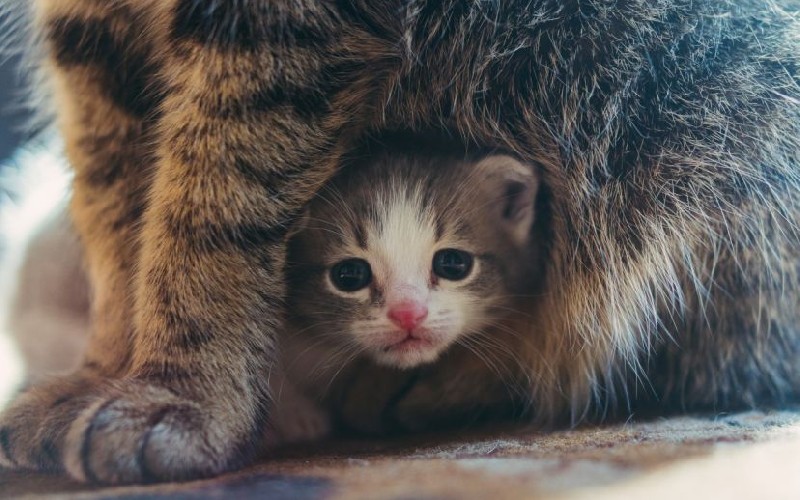
Getting your kitten used to being home alone
A kitten’s bond with their motherA kitten's bond towards their mother is essential for their behavioral development. This bond is reciprocal since the cat also forms a very close emotional relationship with her children. The resulting emotional connection allows for the healthy mental and physical growth of the kitten. The behavioral development of a kitten begins during the prenatal period, in the mother's womb.
Around the 21st day of gestation, the embryo is already able to perceive the mother’s emotions (through contractions of the uterus or intestine related to stress) since the sense of touch is already developed. The neonatal period is followed by the transition period, socialization, and puberty. During each stage, the kitten acquires and integrates all that is necessary for the development of future behavioral patterns. The mother represents a secure base and a teacher of life for the kitten: she reassures and shows how to perform certain tasks.
Throughout the kitten’s growth, the bond with their biological mother extends to the members of the "feline" group with which the kitten lives and to the members of their human family. The bond between cat and the Pet Parent is to be considered similar to the child's attachment to his human mother. The human being is a key reference point and caregiver for the kitten, therefore a real emotional relationship is born between the two.
Leaving the kitten alone, what to do?
Until the moment of adoption, the kitten spends the whole day with their mother and siblings in a familiar environment. The arrival at the Pet Parent’s home involves the sudden separation from the usual social references and the entry into an unknown world. To facilitate a correct transition into this new situation, it is advisable to allow the kitten all the time necessary for exploring their home without rushing. Normally kittens take a few days to get used to the new environment and a few weeks to get to know their new social group. It is necessary for the kitten to feel safe at home and protected by their new family group before being left alone.
Here's what to do:
- Start with short breaks, for example, just 10 minutes. The separation time can then gradually be increased.
- Carry out the first separations at times of the day when the kitten is calmer, such as in the late morning or early afternoon.
- Before going out, we have to inform the kitten that we are going out so that he realizes that something is happening. “Hi Simba, I'm going out and I'll be back soon” would be a typical phrase to say while looking into the room where the kitten is.
- Upon our return, it is necessary to greet the kitten and to give it some comfort.
We can use some aids to support the cat during this new experience such as a pheromone diffuser, background music, or placing a garment of the kitten’s "favorite" family member on their cat bed.. I recommend recording some videos and audio footage during the learning phase in order to observe the little feline. Some meowing, approaching the door, or looking for family members in different rooms can be considered normal behavior. Within a few minutes, however, the kitten should calm down and relax on their cat bed or in another similar place.
Enriching the home environment by taking advantage of the third dimension, hiding a new toy or some food treats, or allowing access to the balcony are some tricks that allow the kitten to avoid being bored while left alone.

